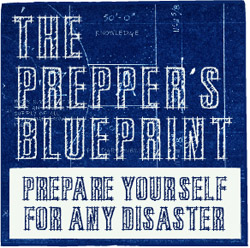The news cycle appears to be dominated by the crisis in Ukraine right now. It looks like things are only going to get worse, not only for those living in Eastern Europe but for the rest of the world. War, famine, hyperinflation, and diseases are all getting closer to becoming our reality by the day.
Since the United States sanctioned Russia over the invasion of Ukraine, food prices have skyrocketed. They were on their way up long before that though, but a new conflict certainly did not help those already struggling. Now, we have war, incoming famine, inflation that is headed right toward hyperinflation, and the possibility of diseases most of us don’t ever think about.
The doctors are now worried about a surge in infectious diseases such as polio, cholera, and measles. Before the war, Ukraine had low vaccination rates against those diseases, Kate White, an emergency program manager for Doctors Without Borders, told CNN on Tuesday.
Related: These Are the Diseases That Will Run Rampant When the SHTF
The crisis in Ukraine has the potential to spiral out of control and affect everyone. During the most tumultuous times in human history, it wasn’t violence that killed the most people, but disease and starvation. Even during wars, when the violence reached its apex, most of the soldiers didn’t die from being killed by another human being, and that remained the case until the 20th century. During the American Civil War for instance, for every three soldiers who died on the battlefield, five died of the disease.
When the SHTF, people have to often resort to using water from sources that are less than ideal. That could mean that the unsanitary conditions that would result can cause a whole host of water-borne diseases including gastroenteritis, Hepatitis A, intestinal parasites, Diphtheria, cholera, typhoid, and even polio.
If things get really bad, medical care will not be an option for most, so know how to prevent and treat the most likely disease that could pop up. Be sure you are planting medicinal herbs this year and stocking over-the-counter medications and first aid supplies just in case. As well, take some time to learn how to use natural medicinal sources in case over-the-counter necessities run out.
Here are 9 common water-borne illnesses to prepare for in a disaster scenario.
 Prepare by making sure your preparedness pantry is stocked. Get some kind of a water filtration system like a Berkey water filter so if you are forced to use water from a source that is less than ideal, you will be more likely to stay healthy.
Prepare by making sure your preparedness pantry is stocked. Get some kind of a water filtration system like a Berkey water filter so if you are forced to use water from a source that is less than ideal, you will be more likely to stay healthy.
How to Purify 12 Gallons Of Water A Day WITHOUT Filters or Electricity
When Clean Water Isn’t Available, Make it So – With a Sawyer
Once things begin to spiral out of control and society descends into madness over soaring food prices, the relatively calm society we know will begin to unravel. It will not take much more pain at the grocery stores to push people over the edge. Be prepared by reading The Preppers Blueprint by Tess Pennington.
A crisis rarely stops with a triggering event. The aftermath can spiral, having the capacity to cripple our normal ways of life. Because of this, it’s important to have a well-rounded approach to our preparedness efforts. Due to the overwhelming nature of preparedness, we have created the Prepper’s Blueprint to help get you and your family ready for life’s unexpected emergencies. To make a more comprehensive, easy-to-follow program, The Prepper’s Blueprint has been simplified and divided up in a way to help you make sense of all the preparedness concepts and supply lists provided. We have divided the chapters into layers of preparedness. –Tess Pennington.
This article was originally published at Ready Nutrition™ on April 1st, 2022








I have Tess’s book. It’s a GREAT read. One of the better references in my library!!